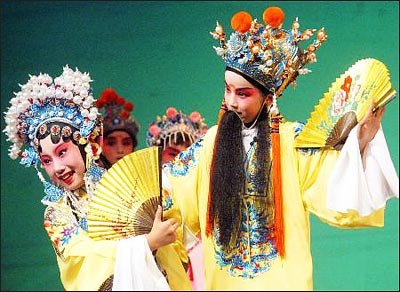| Tools: Save | Print | E-mail | Most Read |
| Operas |
| Adjust font size: |
Chinese traditional opera, Greek drama and Indian Sanskrit opera are considered as the world's three ancient operas. China alone boasts more than 300 kinds of local opera, mainly using singing and dancing to express the plot. At present, hundreds of plays are staged every year, adding variety to people's cultural life. The Plum Blossom Award set up in 1983 is China's highest prize for opera performers of young and middle age. To date, the prestigious award has gone to 460 actors and actresses of 47 types of opera, hailing from 29 provinces, autonomous regions, and municipalities directly under the central government, Hong Kong and Taiwan.
Peking Opera In the past few years, the bold experiment by the Peking Opera Theater of China of combining Western symphony with Peking Opera, won high praise from fellow-professionals. Another important achievement was the video recording of 355 classic operas, with sound records sung by 47 late masters of Peking Opera between the 1940s and the 1960s collected and paired against performances of today's outstanding young and middle-aged artists, in order to preserve and transmit their art down the ages. Local Operas Theater The works of the Beijing People's Art Theater, founded in 1952, represent the high point of Chinese theater. Teahouse and Dragon Beard Ditch have become famous both at home and abroad. Over the past two decades, the theater has staged some 80 new dramas and 12 repertory plays, many of which have become evergreen dramas booked out for every performance. Avant-garde drama has won quite a large following amongst young people. This genre, often performed in small venues and using modern expressive techniques, mainly focuses on themes of modern life. Director Meng Jinghui is the leading exponent of such drama. |
| Tools: Save | Print | E-mail | Most Read |
 |
| Related Stories |
